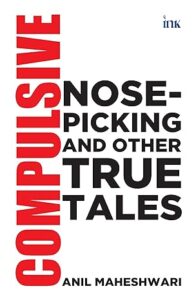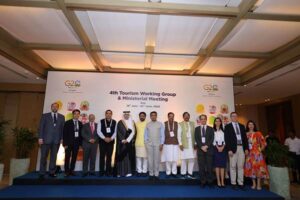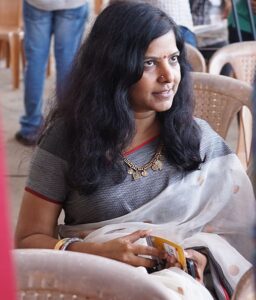There is no Rightwing in India
Ravi Shanker Kapoor | December 20, 2016 11:15 pm

On the face of it, the Right is on the ascendant. Within two-and-a-half years, the world’s two biggest democracies have turned their back on Left-leaning caucuses—the Sonia Gandhi-headed National Advisory Council in India and the dirigiste Obama administration in the US. While there may be doubts about Donald Trump’s conservatism, it is certain that India’s ruling dispensation is anything but Rightwing.
I argued earlier (Modi is a revolutionary, https://thehinduchronicle.com/2016/12/modi-is-a-revolutionary/) that Prime Minister Narendra Modi’s demonetization is “a revolutionary step, a sudden move with a millenarian promise, a defining trait of the Leftwing thinking.” But he is not alone; there are many in the Sangh Parivar whose impulses and thoughts are Left-leaning. Interestingly, many of them are not even aware of this fact.
Consider an article that Minister of Urban Development and Information & Broadcasting M. Venkaiah Naidu wrote for The Indian Express (November 29) with the self-expressive title, ‘The New Cultural Revolution.’ Perhaps, the Honorable Minister is unaware of the connotations of the term ‘Cultural Revolution,’ as also of the calamity it was for the Chinese (1966-76). The brainchild of the Great Helmsman, Mao Tse-tung, it ostensibly intended to rejuvenate the cause of socialism. An editorial of a party newspaper went lyrical about it: “Like the red sun rising in the east, the unprecedented Great Proletarian Cultural Revolution is illuminating the land with its brilliant rays.”
However, the brilliant rays ended up in mass purges, the deaths of lakhs of people (the estimates vary between half a million and two million), the destruction of economy, various acts of unspeakable barbarity, and large-scale torture of anybody suspected of separatism. Anybody with even the faintest idea about the egregious monstrosity of Cultural Revolution would not have embraced the term in any form.
But Naidu is either ignorant of Mao’s evil or is blasé about the human cost the Chinese tyrant imposed on his own people. So, the Minister writes that “the long-term consequences and gains include ushering in a behavioral change at all levels of society. It is a part of the grand ‘cultural revolution’ that the PM is working on. The entrenched old order needs to make way for a new normal. This cultural revolution, impinging on all walks of public and private life amounts to shaking up the system. It ranges from attending office on time, keeping working and living environments clean, accountability, transparency, technology adoption, innovation, etc.”
Quite apart from the unwarranted glorification of the demonetization—people attending office on time, environment becoming clean, accountability and transparency in the system—there is the implicit Leftwing belief that a government decision can be a panacea. The belief is the product and function of the core statist principle: government is and ought to be the prime mover; the people play little, if any, role in shaping their own destiny; their salvation lies in meekly following the diktats of good rulers—rulers like Modi, Naidu would add. Needless to say, the belief is in contradistinction with the prime tenets of liberal democracy: people are the authors of their destiny, and government shall let the individual do whatever he wants to so long as he doesn’t harm others.
Water Resources Minister Uma Bharati was more unambiguous and emphatic about Modi’s ideology. “The truth is the Prime Minister is executing what [Karl] Marx always advocated,” she said in a recent interview with The Economic Times. Speaking to India Today, she even claimed to be a Leftist: “I am in the BJP, but ideologically I am a Leftist.”
It might appear that she was just trying to be identified with the folks who are considered modern, progressive, intellectual, humane, etc.; that she was being disingenuous. To be sure, the Left-liberal establishment hates her, primarily because of her campaign for the Ram Temple. But that is beside the point; the fact is that Sangh Parivar members like her are generally Leftwing and have no compunctions in accepting this fact.
If there was any doubt about the saffron conglomerate’s Left-leaning ideology, it was obliterated by Rakesh Sinha’s article in The Indian Express (December 20). An associate professor at the Delhi University, Sinha is a prominent RSS ideologue who regularly appears on TV shows. He wrote: “Black money took off with the neoliberal turn to the Indian economy in 1991. Neoliberalism, a version of the 19th century politico-economic philosophy of laissez faire, enhances the wealth of a few and makes the majority subservient to the market, while making the state an executive of big business and capital. Common people are impacted both by inequality and black money. Even vital minimum needs like health, education and housing become an end in themselves.”
Ignore the factual inaccuracies like “Black money took off with the neoliberal turn to the Indian economy in 1991.” The truth is that socialist taxation—at one time, the highest slab was 98 per cent—during the heyday of the Congress triggered the black money phenomenon. What is important to notice here is that the RSS apparatchik has not only embraced the Left’s phraseology, ‘neoliberalism,’ but also swallowed its ideology hook, line, and sinker. The same rants about haves and have-nots, inequality, et al.
Sinha goes on to laud the main RSS ideologue, Deen Dayal Upadhyaya: “His [Upadhyaya’s] initiative enabled the Bharatiya Jana Sangh to differentiate itself from laissez faire forces in India, namely the Swatantra Party, a replica of the European right-conservative. The party’s vote percentage had risen to 9 per cent. There was a popular demand from both sides for the merger of the Swatantra Party and Jana Sangh (their combined voting percentage was over 16 per cent).
“But Upadhyaya accorded primacy to ideological pragmatism over political expediency. In his view, the Swatantra Party’s economic philosophy was not for the welfare of peasants and poor; it was a party of Dalal Street. The Jana Sangh under his leadership took a great egalitarian turn, like supporting zamindari abolition, strikes by Central government employees and land reforms.”
Sinha is correct in his assessment that the Swatantra Party was the only party in India that can be called somewhat Rightwing. But notice Sinha’s disapproval of, indeed disdain for, the Swatantra Party, “a party of Dalal Street.” Also notice his appreciation for the socialist ideal, egalitarianism, an ideal that has resulted in the death of millions of people in countries like Russia and China.
Sinha’s support for strikes by Central government employees and land reforms also suggests how close he and his organization are to the Left. Further, he wrote, “Neoliberalism since the 1990s impacted the political morality and culture of every political party. It is the biggest onslaught on our democracy.” Would Sitaram Yechury disagree with this analysis?
So, it is not that saffron politicians are carelessly making statements that are being construed as Leftwing; the core of the RSS is Leftwing. The Sangh Parivar’s ideology is nothing but saffron socialism.






























